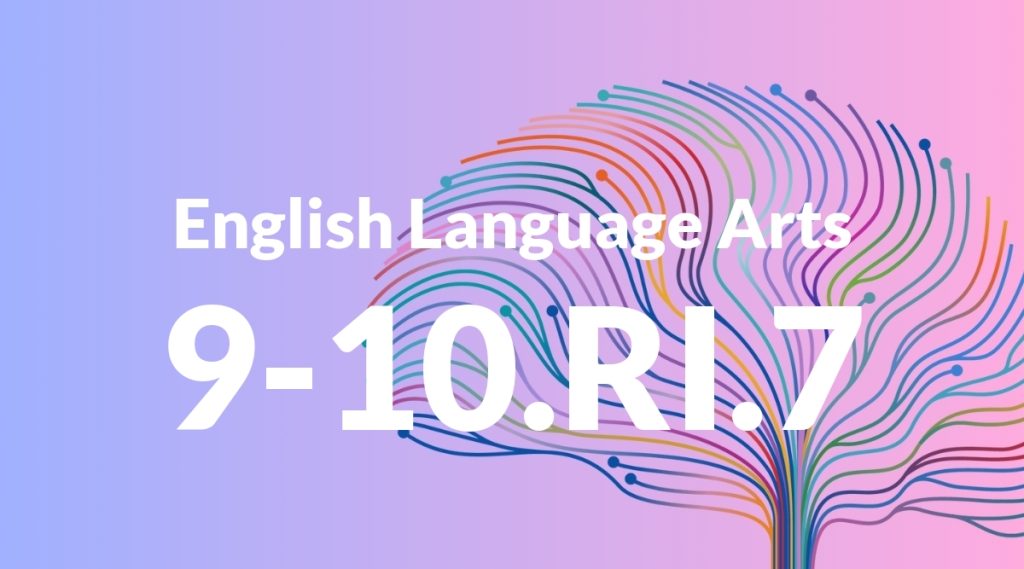Standard: 9-10.RI.7 – Analyze various accounts of a subject told in different mediums (e.g., a person’s life story in both print and multimedia), determining which details are emphasized in each account.
Grade level: Grade 9-10
Subject: English Language Arts
Domain: Reading: Informational Text
Teacher Overview
This standard focuses on the analysis of different accounts of a subject presented in various mediums. It is crucial for students to understand how different formats can influence the presentation and emphasis of information. Mastery of this standard will enhance students’ critical thinking and media literacy skills. Students should be comfortable identifying main ideas and supporting details in texts and have basic familiarity with different types of media such as print, video, and digital formats.
After mastering this standard, students will be equipped to critically evaluate various sources of information, enhancing their overall media literacy and analytical skills.
Common Misconception 1
A common misconception is that all mediums convey information identically. This is incorrect because each medium has unique characteristics that can affect how information is presented and emphasized.
Intervention 1
An effective intervention is to provide students with parallel texts and multimedia presentations on the same topic and guide them through a comparative analysis to identify differences in detail and emphasis.
Common Misconception 2
Another misconception is that one medium is inherently more reliable than others. This is incorrect because reliability can vary based on the source, context, and purpose of the medium.
Intervention 2
To address this, teach students to evaluate the credibility of sources across different mediums and to understand that different formats can offer complementary perspectives.
Prerequisite Knowledge
Students should have a basic understanding of how to analyze texts for main ideas and supporting details, as well as some experience with different types of media.
Subsequent Knowledge
Students will develop the ability to critically evaluate the effectiveness and reliability of different mediums in presenting information, and will be able to synthesize information from multiple sources.
Instructional Activities
- Conduct a class discussion comparing a written article and a video segment on the same news event.
- Assign a project where students create a multimedia presentation and a written report on the same topic, then compare the two.
- Use graphic organizers to help students map out differences in detail and emphasis between different mediums.




